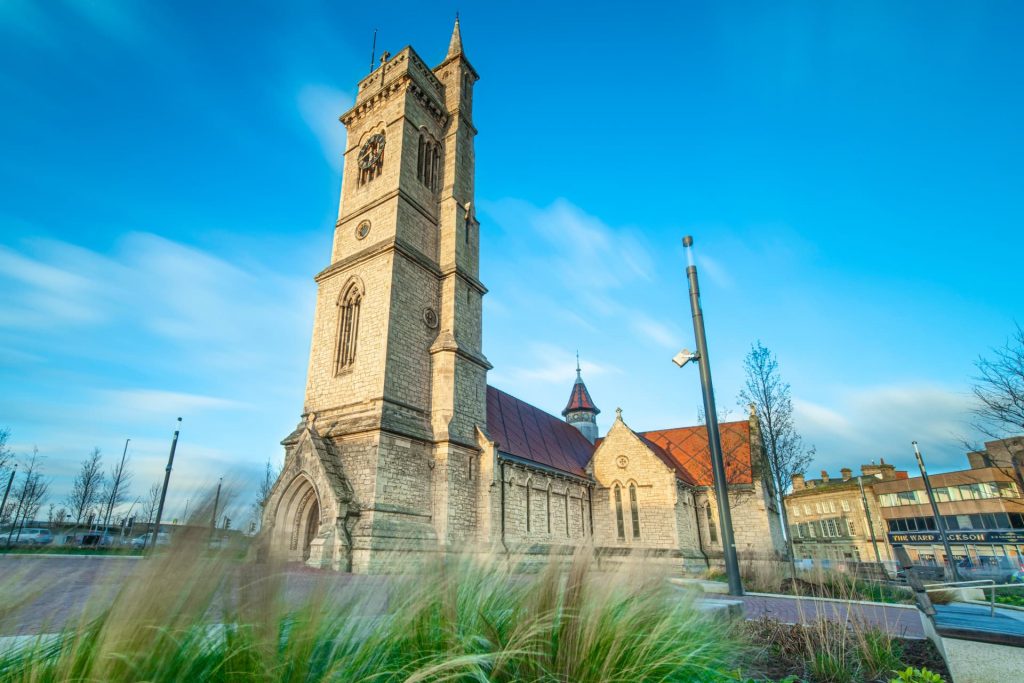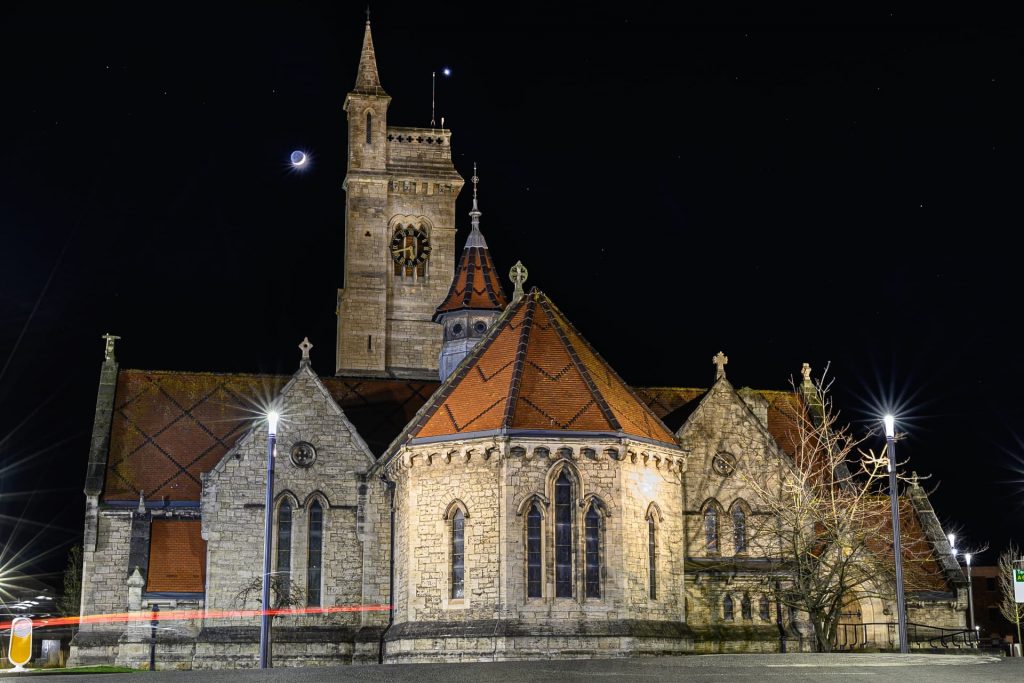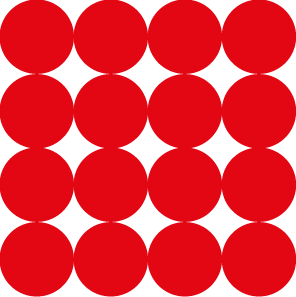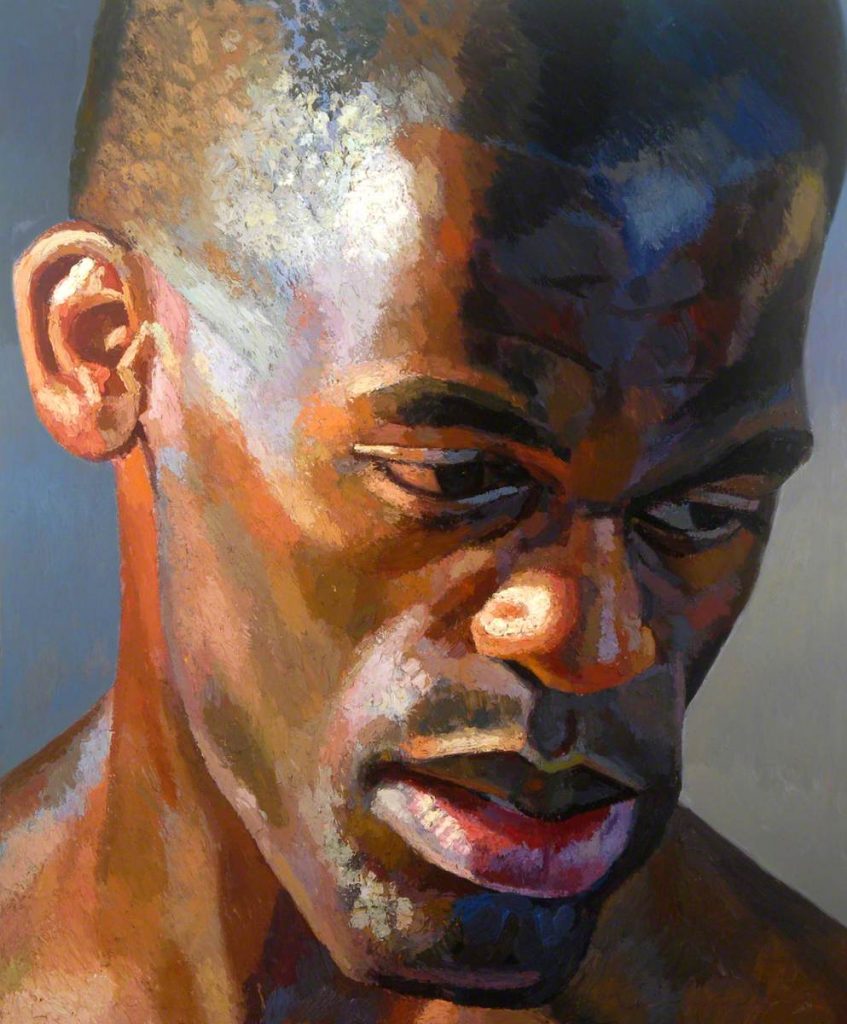

Page Intro Text

Title

Title

Title

Title

Title

Title
Borough Hall

Town Hall Theatre
Art Gallery
What's On
History
Where Christ Church now stands was originally a patch of wind-scoured sand-dunes and the only buildings belonged to scattered farms and the nearby villages of Stranton and Seaton Carew. Christ Church was built for, what was then, the new and rapidly growing town of West Hartlepool that was being built to house and serve the new docks being built and opened. The Church was designed by Edward Buckton Lamb in an “Early English” style and consecrated by the Bishop of Durham on the 20th April 1854. The stone was excavated from the docks being built nearby and donated by Ralf Ward Jackson who was the man behind the building of the docks and West Hartlepool. Christ church could accommodate one thousand people during services and has a 100ft tower that contains the buildings 6 bells that can still be rang.
The alter rails were made, in part, using bog oak dug up whist the docks were being built. The clock mechanism is by W. Potts (Leeds) and was added in 1911. The last service was held on the 10th June 1973 as by that time the congregation had fallen as much of the housing near the church was demolished. The building fell into disrepair and was under threat of demolition, but was made a Grade II* Listed building in 1982. In 1994 a major renovation was started. The building reopened to the public on 5th January 1996 and is now The Hartlepool Art Gallery and displays a wide range of exhibitions throughout the year and is home to the Vestry Café and the Gallery Shop selling locally produced gifts and artwork.
Collection
The Fine Art and Decorative Art items in the museum collection of Hartlepool Borough Council are of a high standard, with some significant major works by nationally and internationally known artists. The Fine Art collection is broadly divided into two main areas, those which are Victorian and Edwardian in period, and contemporary works from 1970 to the modern-day. It consists of some 1500 major works of art comprising oil paintings, watercolours, prints and sculpture.
Highlights of the major artists represented include works by Lucian Freud ‘Head of A Woman’; Frank Henry Mason, Eric Atkinson, Alice Nicholson ‘Idleness’, James Clark ‘The Bombardment of the Hartlepools’; John Wilson Carmichael, Margaret Green ‘Seaton Carew Beach’; Stanhope Forbes ‘Gala Day at Newlyn’, ‘Evening, Worker’s Return’; John McCracken, Basil Beattie, John Bratby, Daniel Maclise, ‘Sleeping Beauty’; Henriette Ronner, Nahem Shoa, ‘Giant Head, Ben’; Frank Auerbach ‘Shell Building Site’ and Frederick Shields. Watercolours and Drawings are also represented, and include works by Myles Birkett Foster, Frank Henry Mason, James Clark, Frederick Shields, Stanley Spencer and Laurence Stephen ‘L.S.’ Lowry. The Fine Art collection’s main themes are strong on local landscapes and scenes relating to events, maritime and seascapes, portraiture including civic dignitaries, and animals.
The Service also holds a strong collection of Decorative Art, numbering some 1600 items including extensive public donations and material acquired from the ex-Cleveland County collection. This demonstrates a broad range of decorative art material from a broad range of techniques, materials and periods.
The ceramics collection within Decorative Art includes items dating from the late 17th century through to the 20th century.
There is a large collection of Batavian and other Brown Glazed wares, and an extensive donation of late 19th century Famille Rose items. The collection also contains Staffordshire ware and local wares such as Linthorpe ware, Middlesbrough ware, Stockton ware, Newcastle ware, Sunderland ware, Cleveland ware and West Hartlepool ware.
Glass items mainly date from the 18th century through to the 20th century and include Sunderland ware, Georgian goblets, Lalique glass, and Art Deco glass. Silver items comprise of mainly Georgian silverware, and Art Nouveau metal and silverware, including pieces by Christopher Dresser.
The collection also boasts some high quality Oriental decorative artworks. The majority was acquired in the early years of the Museum service (1920s-1930s) from local donors mostly connected with local industries, originating from the Middle and Far Eastern countries and different periods. It includes Indian religious figures in copper and bronze, Indian dolls, Indo-Chinese images of the Buddha, fine oriental porcelain, a large collection of
18th and 19th-century Japanese Netsuke, and Japanese Arms and Armour.
You can view 436 objects from the collection here.
Conservation of the Collection. https://youtu.be/AIm2MKGPAV4

